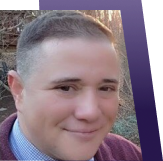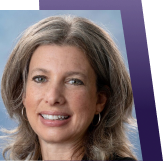Schools closed in many other countries, too, but under heavy international criticism, Sweden kept its schools and daycares open for its 1.8 million children, ages one to 15. Why? While anyone can get infected, we have known since early 2020 that more than a thousandfold difference in Covid mortality risk holds between the young and the old. Children faced minuscule risk from Covid, and interrupting their education would disadvantage them for life, especially those whose families could not afford private schools, pod schools, or tutors, or to homeschool.
What were the results during the spring of 2020? With schools open, Sweden had zero Covid deaths in the one-to-15 age group, while teachers had the same mortality as the average of other professions. Based on those facts, summarized in a July 7, 2020, report by the Swedish Public Health Agency, all U.S. schools should have quickly reopened. Not doing so led to “startling evidence on learning loss” in the United States, especially among lower- and middle-class children, an effect not seen in Sweden.
Sweden was the only major Western country that rejected school closures and other lockdowns in favor of concentrating on the elderly, and the final verdict is now in. Led by an intelligent social democrat prime minister (a welder), Sweden had the lowest excess mortality among major European countries during the pandemic, and less than half that of the United States. Sweden’s Covid deaths were below average, and it avoided collateral mortality caused by lockdowns.
Yet on July 29, 2020, the Harvard-edited New England Journal of Medicine published an article by two Harvard professors on whether primary schools should reopen, without even mentioning Sweden. It was like ignoring the placebo control group when evaluating a new pharmaceutical drug. That’s not the path to truth.
That spring, I supported the Swedish approach in op-eds published in my native Sweden, but despite being a Harvard professor, I was unable to publish my thoughts in American media. My attempts to disseminate the Swedish school report on Twitter (now X) put me on the platform’s Trends Blacklist. In August 2020, my op-ed on school closures and Sweden was finally published by CNN—but not the one you’re thinking of. I wrote it in Spanish, and CNN–Español ran it. CNN–English was not interested.
I was not the only public health scientist speaking out against school closures and other unscientific countermeasures. Scott Atlas, an especially brave voice, used scientific articles and facts to challenge the public health advisors in the Trump White House, National Institute of Allergy and Infectious Diseases director Anthony Fauci, National Institutes of Health director Francis Collins, and Covid coordinator Deborah Birx, but to little avail. When 98 of his Stanford faculty colleagues unjustly attacked Atlas in an open letter that did not provide a single example of where he was wrong, I wrote a response in the student-run Stanford Daily to defend him. I ended the letter by pointing out that:
Black listed by X, and peers at Harvard, supposedly a bastion of intellect and academic freedom. He faced more black listing;
et on July 29, 2020, the Harvard-edited New England Journal of Medicine published an article by two Harvard professors on whether primary schools should reopen, without even mentioning Sweden. It was like ignoring the placebo control group when evaluating a new pharmaceutical drug. That’s not the path to truth.
That spring, I supported the Swedish approach in op-eds published in my native Sweden, but despite being a Harvard professor, I was unable to publish my thoughts in American media. My attempts to disseminate the Swedish school report on Twitter (now X) put me on the platform’s Trends Blacklist. In August 2020, my op-ed on school closures and Sweden was finally published by CNN—but not the one you’re thinking of. I wrote it in Spanish, and CNN–Español ran it. CNN–English was not interested.
I was not the only public health scientist speaking out against school closures and other unscientific countermeasures. Scott Atlas, an especially brave voice, used scientific articles and facts to challenge the public health advisors in the Trump White House, National Institute of Allergy and Infectious Diseases director Anthony Fauci, National Institutes of Health director Francis Collins, and Covid coordinator Deborah Birx, but to little avail. When 98 of his Stanford faculty colleagues unjustly attacked Atlas in an open letter that did not provide a single example of where he was wrong, I wrote a response in the student-run Stanford Daily to defend him. I ended the letter by pointing out that:
Among experts on infectious disease outbreaks, many of us have long advocated for an age-targeted strategy, and I would be delighted to debate this with any of the 98 signatories. Supporters include Professor Sunetra Gupta at Oxford University, the world’s preeminent infectious disease epidemiologist. Assuming no bias against women scientists of color, I urge Stanford faculty and students to read her thoughts.
None of the 98 signatories accepted my offer to debate. Instead, someone at Stanford sent complaints to my superiors at Harvard, who were not thrilled with me.
I had no inclination to back down. Together with Gupta and Jay Bhattacharya at Stanford, I wrote the Great Barrington Declaration, arguing for age-based focused protection instead of universal lockdowns, with specific suggestions for how better to protect the elderly, while letting children and young adults live close to normal lives.
With the Great Barrington Declaration, the silencing was broken. While it is easy to dismiss individual scientists, it was impossible to ignore three senior infectious-disease epidemiologists from three leading universities. The declaration made clear that no scientific consensus existed for school closures and many other lockdown measures. In response, though, the attacks intensified—and even grew slanderous. Collins, a lab scientist with limited public-health experience who controls most of the nation’s medical research budget, called us “fringe epidemiologists” and asked his colleagues to orchestrate a “devastating published takedown.” Some at Harvard obliged.
A prominent Harvard epidemiologist publicly called the declaration “an extreme fringe view,” equating it with exorcism to expel demons. A member of Harvard’s Center for Health and Human Rights, who had argued for school closures, accused me of “trolling” and having “idiosyncratic politics,” falsely alleging that I was “enticed . . . with Koch money,” “cultivated by right-wing think tanks,” and “won’t debate anyone.” (A concern for those less privileged does not automatically make you right-wing!) Others at Harvard worried about my “scientifically inaccurate” and “potentially dangerous position,” while “grappling with the protections offered by academic freedom.”
Though powerful scientists, politicians, and the media vigorously denounced it, the Great Barrington Declaration gathered almost a million signatures, including tens of thousands from scientists and health-care professionals. We were less alone than we had thought.
Even from Harvard, I received more positive than negative feedback. Among many others, support came from a former chair of the Department of Epidemiology








